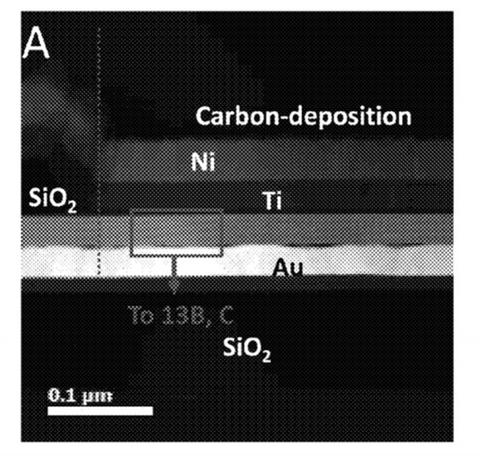Patent of the Month: August 2021

Patent Description
This invention relates to the memory devices called the resistive random-access memory (RRAM) cells. RRAM-based technology has gained attention from the semiconductor industry due to its potential scalability, high operation speed, high endurance, and ease of process flow. RRAM devices are typically two-terminal cells whose operation are based on switching from a high resistive state (HRS corresponding to a value of “0”) to a low resistive state (LRS, “1”) thereby storing information in a nonvolatile fashion by applying a sufficiently high voltage or by driving a large enough current through the cell. Existing RRAM devices utilize switching mechanisms that involve movement of neutral or charged atoms inside a cell. Accordingly, both reliability aspects and switching speed of such devices represent substantial challenges. In our invention, jointly with Purdue University and Theiss Research Inc., a new switching mechanism is proposed that is based on a reversible phase transition in the 2D material, MoTe2, synthesized at NIST. When an electric field is applied to the MoTe2 layer, sandwiched between two electrodes, atoms in MoTe2 are displaced by a tiny distance, resulting in a HRS or an LRS state, which occurs much faster than switching in conventional RRAM devices. Specifically, a semiconducting 2H-MoTe2 phase (HRS) transitions to a new 2Hd-MoTe2 phase with a higher conductivity (LRS) by application of a set voltage. By reversing the electrical field, the cell transforms from the LRS back to the HRS, i. e., resetting the cell back to “0”. Detailed scanning transmission electron microscopy (STEM) examination of cross-section of the devices conducted at NIST reveals such reversible phase transition from HRS to LRS state. The figure below shows a formation of highly conducting 2Hd ‘filament’ in a 2H matrix.
Thus, this invention provides a new class of the RRAM devices with advanced characteristics such as improved lifetime, lower energy consumption, and higher operation speed. The RRAM devices based on phase-changing transition metal dichalcogenides (TMD) materials may be used in fabrication of neuromorphic computing, in-memory computing or memristor-based nonvolatile logic circuits and devices.

Inventors
Joerg Appenzeller
Feng Zhang
Yuqi Zhu
Albert V. Davydov
Sergiy Krylyuk
Huairuo Zhang
Leonid A. Bendersky
Technology Types
Materials for Electronics
Electron Physics
Electronics
Benefits
One significant advantage of the proposed RRAM based on phase changing TMD materials is that the phase transformation is reversible and does not involve a change from an amorphous to a crystalline state as typically observed in conventional phase change materials (PCMs). Instead, MoTe2 remains crystalline when undergoing the local phase transition from a semiconducting 2H to a metallic 2Hd phase. In comparison to, e.g., VO2 that can also undergo an insulator-to-metal phase transition under an electric field but requires a hold current and exhibits a unipolar switching behavior, while the MoTe2 phase transition reported here is bipolar, nonvolatile, and occurs at room-temperature.

